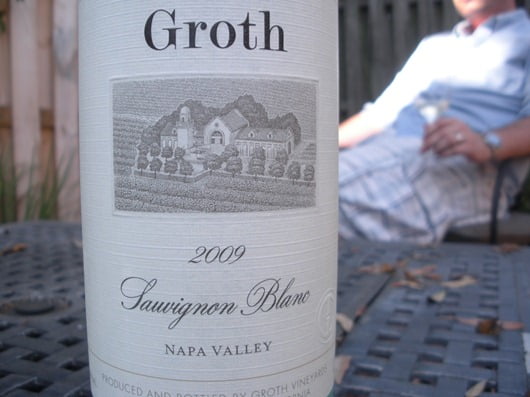Groth Napa Valley Sauvignon Blanc 2009
February 21, 2011Grapes
Sauvignon Blanc 96%, Semillon [SEM-ee-yawn] 4%
Facts
The warmer weather is coming folks, so let’s get some more white wine reviews up in here!!!
Sauvignon Blanc and Semillon are the main two whites grapes of the Bordeaux region of France. If you ever see a white Bordeaux, most likely it’s going to be a blend of the two.
Sauvignon Blanc, Semillon and Muscadelle are the only three grapes that are allowed in white “Meritage” blends.
In an attempt to “tame” Sauvignon Blanc, some producers opt to blend it with a little Semillon which is softer and more mellow.
The Groth Sauvignon Blanc 2009 wine was aged “sur lie” for 5 months. This just means that the wine spends time aging in contact with the deposited dead yeast cells. This in turn will lead to a yeasty aroma and taste, and give added complexity to the wine. Sur lees aging is at the winemakers discretion, depending on the style they are looking for.
The winery is owned by Dennis and Judy Groth. Dennis was one of the founders of video game company Atari, and when it was sold in 1984 he needed a “hobby”. Groth also makes a Chardonnay, Cabernet and Reserve Cabernet.
Place
Napa Valley is a warmer wine growing region in California, this typically leads to tropical fruit flavors and a “rounder” and richer style in the whites.
According to the Groth Winery, the 2009 vintage had a “ lack of excessive heat and heat spikes, allowing us to make wines at more moderate alcohols while still retaining a tremendous amount of fruitiness and acidity”. What does Al Gore know anyway!?!?!?
Since Groth names “Napa Valley” on the label, they must have a minimum of 85% Napa grapes in the bottle. This is stricter than a simple “California” label (set at a 75% minimum), but not as strict as naming a specific vineyard on the bottle (95%). So when you are often wondering about the price difference between various wines of the same grape, the rules of minimum percentages is BIG factor.
Food Pairing
White fish, shellfish or chicken is a given (taking into account the sauce that accompanies). I would really like to see what this wine can do with foods such as crab meat, Caesar salad, goats cheese, or seafood pasta with a cream based sauce.
Taste
I took this wine straight from the fridge, and it was a little “muted”. Don’t be afraid to let whites warm up a little in the glass to reveal their full potential.
Once it was allowed to warm slightly, the Groth showed rich and ripe peach, melon and honeysuckle on the nose, with just a hint of yeast. Crisp, but not in a full-on New Zealand Sauvignon Blanc kind-of-way. Melon continues with a hint of lime and yellow grapefruit. The acidity is present, and balances nicely with the creamy texture. Medium in body, finishes long and elegant.
Price
$19’ish a bottle.
Visit the Groth website at Grothwines.com











